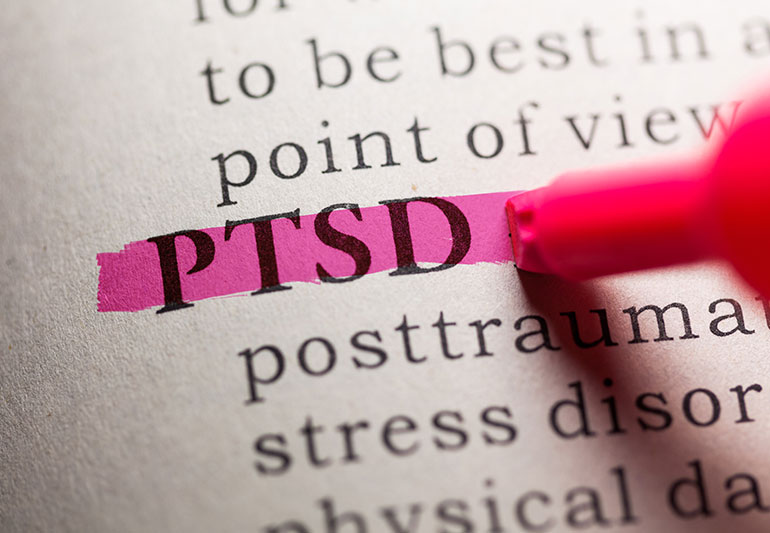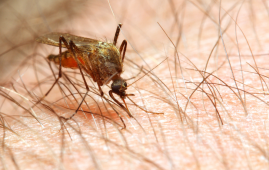


If you have post-traumatic stress disorder (PTSD), you know how much it can mess with your day-to-day life. But help is available. You can take steps to live well even with this challenging disorder.
PTSD symptoms: difficult but totally normal
Maybe you experience nightmares or flashbacks. The anxiety they bring can show up without warning, like the worst kind of surprise houseguest. And you might find yourself sucked into quicksand-like swamps of anger or guilt.
The good news: All of those symptoms are normal. You might be thinking, “That’s supposed to be good news?” But understanding where your symptoms are coming from is the first step toward healing. “And you can heal and recover from PTSD – it will just take some time,” says psychiatrist Molly Wimbiscus, MD.
What exactly is PTSD anyway?
First, the basics. PTSD is a type of anxiety disorder. It occurs in people who’ve experienced or witnessed a traumatic event.
Sometimes, that event is big and obvious: combat, a life-threatening accident or sexual assault. Other times, it develops after a series of smaller, less obvious, stressful events — like repeated bullying or an unstable childhood.
Chronic PTSD can result from multiple adverse childhood experiences, or ACEs, including unstable adult relationships, food insecurity, childhood abuse, effects of racism, recurrent micro-aggressions and more.
These recurrent childhood stressors can impact the brain and overall development leading into adulthood. When a child is exposed to stressors early in life, unhealthy patterns often develop, and brain function may change due to the internalization of trauma.
How is PTSD treated (and is it worth the effort)?
“Professional treatment can help you feel better,” says Dr. Wimbiscus. And while medications can play a role in treating the disorder, she says the gold-standard treatment is trauma-focused cognitive-behavioral therapy or TF-CBT, and sometimes another variation of this type of therapy called EMDR (eye movement and desensitization reprocessing).
This type of therapy helps you reframe your memories of the trauma and learn new ways to manage those thoughts and feelings. “A big part of managing PTSD is having a skilled mental health professional working alongside you,” Dr. Wimbiscus says.
Here’s the ugly truth: That treatment isn’t easy — it might dig up memories or emotions you’d rather keep buried. And for all that effort, you may not feel like you’re making much progress. And you might have to meet with your therapist a few times before you can get into the real work of treating PTSD.
Having patience for that process is easier said than done. But your hard work will be worth it when you come out on the other side, with fewer symptoms and better tools to manage your anxiety.
Some people with PTSD will notice their symptoms fade in a matter of months. For others, healing takes longer. As a result, you may feel frustrated that you can’t speed up the process.
Can you live a normal life with PTSD?
While you’re being treated for PTSD, you can do several things to make getting through each day a bit easier:
- Embrace daily (often mundane) routines. It can be tempting to hole up and avoid situations that could trigger anxiety. But avoiding life only makes symptoms worse. “Get up, take a shower, go to work or school every day — even if you don’t feel like it,” advises Dr. Wimbiscus.
- Ask for help. Often, there are workarounds to help you manage symptoms. If you need some adjustments to help you succeed at school or work, don’t be afraid to ask. For example, if you’re having trouble concentrating, ask to take tests in a quieter room or ask to move to a quieter cubicle in the office. (By the way, you may even be eligible for medical leave while you undergo treatment.)
- Get support. If you have supportive friends and family members, that’s terrific. They probably want to help, so let them know what you need — whether it’s driving you to appointments, weekly coffee dates to get you out of the house or just a sympathetic ear. Unfortunately, not everyone can lean on family members. If your inner circle can’t offer you the help you need, try looking for a support group (in person or online) to connect with others facing similar challenges. It’s good to have friends who get it. NAMI, the National Alliance on Mental Illness, can help connect you to support groups and resources in your area.
- Avoid drugs and alcohol. You probably know that drowning your feelings in a bottle of whiskey isn’t a long-term solution. Yes, it can be tempting to use substances to escape the hard parts of PTSD. But substance use can be dangerous and will make your recovery harder in the long run.
Don’t be too hard on yourself.
One more thing you should do if you have PTSD: Be kind to yourself. That advice probably makes you roll your eyes — but sometimes, cheesy advice rings true. PTSD can cause feelings of guilt, shame and anger. When you’re feeling down, it can help to remember that it’s not you. It’s the disorder.
“PTSD changes the structure of your brain,” Dr. Wimbiscus points out. Think about that: Your brain is physically different than it used to be. PTSD is not caused by weakness, and you can’t just make yourself get over it.
So what should you do when you’re feeling hopeless?
Remember that hopelessness, too, can be a symptom of the disorder.
And try to follow Dr. Wimbiscus’ advice: “Focus on getting through your daily tasks, and know that it gets better. Allow time to do its work. It may be a struggle right now, but time is one of our greatest healers. There is hope.”
more recommended stories
 E-Cigarette Use and Heart Attack Risk in Former Smokers
E-Cigarette Use and Heart Attack Risk in Former SmokersKey Takeaways for Clinicians and Nurses.
 Ultramarathon Physiology: What HCPs Should Know?
Ultramarathon Physiology: What HCPs Should Know?Ultramarathon Metabolism: What Happens to the.
 High-Intensity Training and Oxidative Stress Insights
High-Intensity Training and Oxidative Stress InsightsNew Evidence Linking High-Intensity Training and.
 Sterilized Fermented Beverage for Obesity: New Evidence
Sterilized Fermented Beverage for Obesity: New EvidenceEarly Insights Into a Sterilized Fermented.
 Cardiovascular Risk and Sudden Cardiac Death in Diabetes
Cardiovascular Risk and Sudden Cardiac Death in DiabetesRising Sudden Cardiac Death (SCD) Risk.
 Perinatal Mental Health Challenges Highlighted in New Study
Perinatal Mental Health Challenges Highlighted in New StudyMental Health Challenges in New Parents:.
 Walking Speed Before Hip Replacement Predicts Recovery
Walking Speed Before Hip Replacement Predicts RecoveryNew Evidence Points to a Simple,.
 Safer Allogeneic Stem Cell Transplants with Treg Therapy
Safer Allogeneic Stem Cell Transplants with Treg TherapyA new preclinical study from the.
 How Soybean Oil Impacts Weight Gain and Metabolism
How Soybean Oil Impacts Weight Gain and MetabolismWhy Soybean Oil May Affect Metabolism.
 New Malaria Prevention Insights From African Biostatistics
New Malaria Prevention Insights From African BiostatisticsHow New Data Is Reframing Malaria.

Leave a Comment